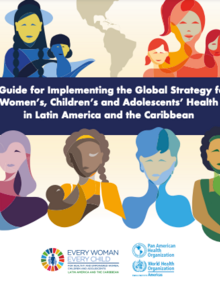In September 2015, during the United Nations Sustainable Development Summit, United Nations Secretary-General Ban Ki-moon presented the Global Strategy for Women’s, Children’s and Adolescents’ Health (2016-2030). During its launch, four countries of the Americas (Canada, Colombia, Mexico, and the United States) committed to implementing the Global Strategy in the Region. Since then, more than 50 countries around the world have joined them in committing to the Global Strategy. By recognizing that health is more than the absence of disease, and that many complex factors influence people’s health, the Global Strategy incorporates both the life course approach and collaboration with other sectors. This inclusive process allows to advocate for nutrition, education, gender equality, respect for rights and cultural diversity, clean water and clean air, sanitation, hygiene, and infrastructure in the hope that all women, newborns, children, and adolescents achieve their right to the highest possible level of health. Furthermore, the objectives established in the Global Strategy will guide countries on the path towards achieving the 2016-2030 Sustainable Development Goals (SDGs). To help countries achieve the Global Strategy objectives, international organizations throughout the world have begun to adapt and develop roadmaps for its implementation within each specific region.
|

